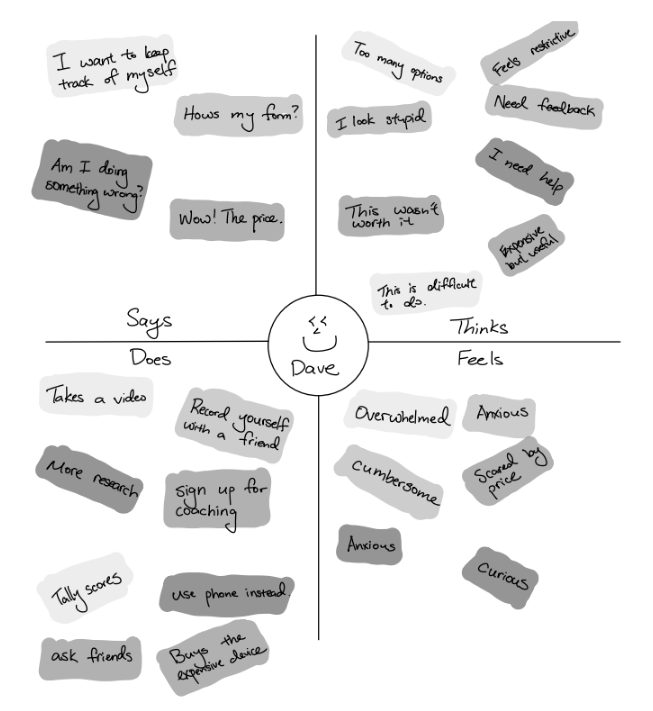What we want to bring to you:
Our motion tracker (RePlai) helps new and amateur athletes who want to track their progress to achieve the perfect form by snapshotting mistakes during sports and gives the opportunity for self-improvement when practicing alone, unlike Qualisys and Xsens. Which require many sensors at an exorbitant prices.

Our Audience:

Dave is an ordinary working guy that loves to play basketball in his spare time but he is fairly new at the sport and don't have many people he knows that can help him improve.
Our Logic:
Our MVP design stresses the ease of visual interpretation of data and simple app navigation as our useability-driven design. The visual interpretation is achieved through a series of overlay-able skeleton gifs that can compare visual performance from one instance/attempt to another. It would look like several skeletons moving together at the same time and a sidebar that can selectively choose which skeleton to show at the same moment. Of course, gifs will be played at a loop. Then the simple social app navigation. This allows users to not only use the app for personal competition it can also be used as a social platform. The users can invite friends and families to have friendly mimic competitions instead of a super-serious data driving form correcting app. It lends itself to reusability because there is something to go back for, not just self-improvement. This allows for personas beyond athletes and health nuts like Jane the basketball fan to pick up and revisit the app to connect with similar-minded personas. The key point is to give a reason for users to come back to the app besides using the skeleton function, recent surveys have shown that users typically uninstall or do not use an app after a 24-hour period unless the app is extremely engaging or fulfills its job with minimum hassle. If you want to read more about digital health apps and retention rates, click on the hyperlink below for a redirect to an article from The Economist!
The Economist: Apps interpreting data from wearable devices are helping people to live better